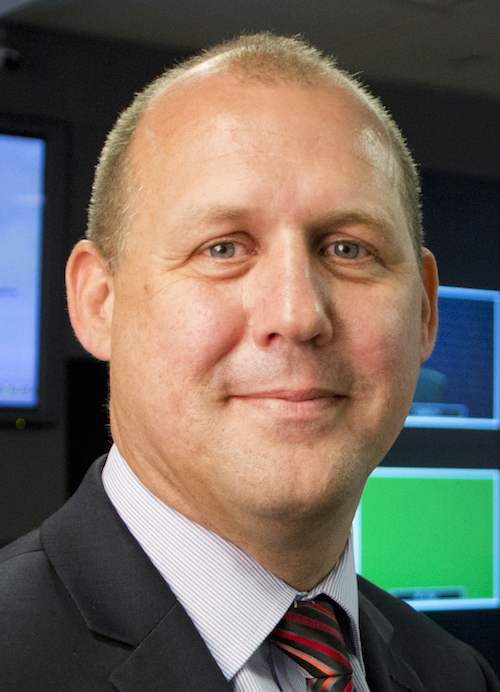How to Avoid AV-IT Culture Clash

Sometimes they have competing agendas, and sometimes they don’t understand each other. Sometimes they’re fighting over territory, and sometimes they’re just not communicating well (or too little, if at all). Whatever the case, getting AV and IT professionals to work well together can be a challenge. The good news? It doesn’t have to be this way.
One of the first steps AV tech managers can take in cultivating good AV/IT relations is by practicing good communications—and early on, according to Mathew Slack, lead infrastructure engineer at CIBC, a financial institution headquartered in Toronto. “It’s about having those conversations with those other IT groups—whether it’s the security team, or the architecture team, or the network team—and making sure that you lay the groundwork for that solid relationship through things like roadmap sessions, and discussing future projects and solutions with those peers well in advance,” he said. “I think a lot of the time, network teams or security teams are scrambling to solve something in the AV space because a lot of AV systems and solutions are custom. Having those conversations very early brings everyone together for a common understanding of what the solution is going to be.”
Related: How IT Departments Really View Networked AV

Matt North is the learning spaces technology manager at the University of East Anglia (UEA) in Norwich, U.K. He relayed that he and his team of four technicians provide both AV and IT support, and North is also involved in system upgrades and new deployments. He described an effective working relationship between AV and IT at the university, and attributed this to the fact that the AV team operates within the IT department. “I think that structure has quite a big part to play in it—especially in a university environment, where hierarchy and structure tend to take dominance in terms of how well things move, and how communication flows,” he said.
Last summer, North and his team performed a large AV-over-IP rollout in UEA’s New Science Building. Leading up to the deployment, North—who said his background was largely AV-centric prior to joining the university staff in 2017—recounted his efforts to gain a better understanding of IT. “It was quite a learning curve for me to start dealing in network terminology, understanding network principles, and things like that,” he said. “I think that project certainly wouldn’t have been the success that it now is if it wasn’t for me being able to establish that really close working relationship with the networking team.” He relayed that engaging with IT at the outset was key: “They were informed and well-versed in what we were trying to do, so they could ensure that they were able to deliver the quality of service on the network that we were expecting, in order for our systems to perform as designed and as our users required them to. We brought them into the conversations with manufacturers, they were able to ask questions, and ultimately, they had some influence in the decision over the product that we selected.”

Prior to becoming chairman of the AV User Group, a global community of AV end user professionals headquartered in London, Owen Ellis worked as an AV executive at the corporate enterprise level. He recounted that his organization was putting AV hardware on the main corporate network as early as 2004, which mandated that Ellis and his team gained an understanding of the ITIL (IT Infrastructure Library) framework of best practices, and IT Service Management (ITSM) principles.
“The lessons that we learned from that and the benefit we got from it was phenomenal,” Ellis said, describing the processes AV was now required to follow. “[For example], every time a software release or firmware release came out, we had to justify not imposing it or why we were imposing it, and we would always give feedback to the manufacturer. It kept you alert to the products in the space that we were using, and for me, [it] was really about learning about IT.”
A daily selection of features, industry news, and analysis for tech managers. Sign up below.
Ellis argued that even in organizations that keep AV and IT separate, AV-centric professionals stand to benefit from getting educated about IT best practices. “When you’ve got a global organization with thousands of devices connected to that AV network, and you get a problem with one of them, you’re going to get a problem with all of them—especially if it’s software or firmware—and you need the processes in place to be able to deal with that when it happens,” he said. “If you haven’t followed those really good, structured, ITIL/IT Service Management processes, you’ll get into trouble, [and] it will have a massive impact on your organization, because you could end up with thousands of rooms, globally, with problems.”

Mike Pedersen, CTS-D, CTS-I, EAVA, is audiovisual experience manager at Iowa State University in Ames, IA. (Pedersen is also council chair for AVIXA’s Technology Managers Council.) Like North, his team works under IT—in his case, the IT Services Office of the CIO. He said that he’s taken an ITIL foundations course to better speak the language of IT. “Just being able to go in with that background makes those conversations [with IT] go a whole lot easier, and you get a whole lot more respect from the network folks when you can do that,” he said. He encourages AV professionals to make the effort to get educated on the ITIL framework, and to consult with their own IT teams to get input on what other knowledge and skills they should be developing.
Pedersen also noted the importance of prioritizing security—and letting IT know AV is concerned about it. At Iowa State, he’s currently developing a process whereby he hands off new devices to the network security team for testing prior to putting them on the network. This way, if the network team is uncomfortable with certain devices, these issues can be addressed before any problems arise.
It’s also important that AV and IT are communicating regularly, Pedersen said. He suggests routine meetings (at least once a month), rather than ad hoc conversations. “It just shows that you care what’s going on from a network perspective,” he said. “It shows that it’s important to you, and then you want to establish that ongoing rapport.” This, he said, helps to strengthen the AV/IT relationship as time goes on.

For Slack, in order for AV and IT to work well together, they must be viewed as part of a single entity. “I think the first challenge is the perception that AV is separate from IT,” he said. “To me, AV is a subset of IT, no different than how a network team, a storage team, or a server team is part of a greater IT organization. It’s really that change in mindset.”
A Pandemic Positive?
Slack said that one positive side effect of the COVID-19 crisis is that it has strengthened the relationship between AV and IT.
“AV and IT have definitely grown closer as the need for hybrid learning and meetings has increased,” he said. “The need for well thought-out AV solutions that integrate seamlessly with collaboration and virtual event platforms is now well understood by all stakeholders within a company. This really helps in the conversations in prioritizing other IT teams’ time to work on these solutions. What’s emerged from the pandemic is AV is no longer an island. We can’t build an isolated, custom solution in a room. We need to think about AV in our solutions as part of an integrated, end-to-end solution that enables companies to be more productive. And really looking at: how does the room interact with hybrid learning and meeting environments, and really understanding the remote experience as well as the in-person experience. That only works when you have that integrated, end-to-end view.”
Carolyn Heinze is a freelance writer/editor.
Carolyn Heinze has covered everything from AV/IT and business to cowboys and cowgirls ... and the horses they love. She was the Paris contributing editor for the pan-European site Running in Heels, providing news and views on fashion, culture, and the arts for her column, “France in Your Pants.” She has also contributed critiques of foreign cinema and French politics for the politico-literary site, The New Vulgate.
